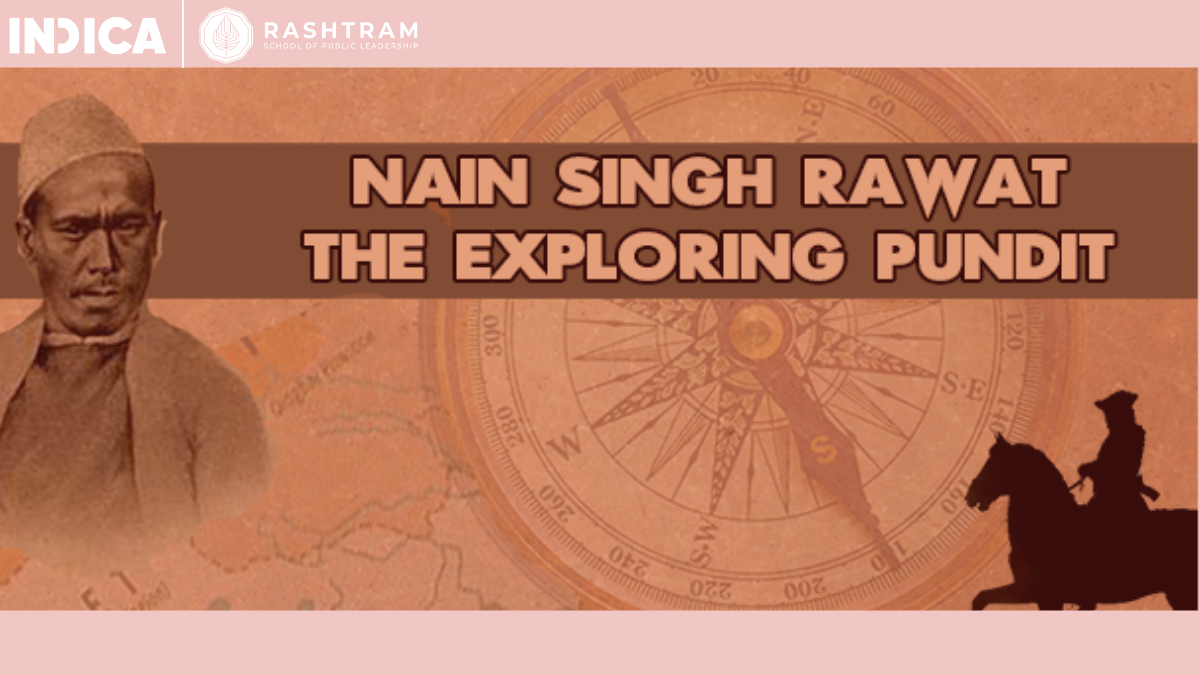These British spies were mostly Hindus and the stupendous journeys that they took and the surveys that they made are the stuff of legends.
By Dr Pankaj Saxena, Director for Centre for Cultural Studies
In the previous article, we saw how long before Christ, about 2300 years ago, Indian kings and armies had crossed the Himalayas and established kingdoms deep inside the Taklamakan desert and even inside the borderlands of China, with influences running as far as Dun-huang which comes inside China proper. In this article, we will see how this legacy was continued by individual Indians until India was paralyzed by the ‘frog in the well’ diplomacy of Nehru.
Indians had never quite abandoned their intrepid excursions to Central Asia. When the first waves of Islamic iconoclasm passed over Central Asia and the Central Asian Khanates were created in what is now former-Soviet Turkestan and also in Eastern Turkestan, the trade once again started. China however became a much-diminished player than before and it was primarily Indian traders who visited these oasis towns of Central Asia to trade with the local rulers and to reignite some of the old silk and spice routes.
India and China were the only two countries that could send their traders to these cities. Tibet had banned all foreign countries and nationals from entering its sacred domains except the Hindu and Buddhist pilgrims from India and China. Muslims were forbidden too as the clashes of Tibetan Buddhism and Islam had led to some ugly results.
Whether it was the icy passes of the Karakoram, or Kunlun, whether it was the Islamic Khanates of Central Asia or the chilling plateaus of Tibet, the Hindu trader could be found everywhere and had kept the connection of India and Central Asia alive. This was not obviously a state enterprise, and it was the initiative of the individual Hindus and individual traders who risked a lot in order to keep these connections alive.
When the first European explorers arrived in the late 19th century in Central Asia and visited many of its cities for the first time and were forbidden from entering many others, they found that the Hindu traders had already been in every one of these cities. The Hindus from India could enter all the forbidden cities of Central Asia without much ado. And this is how one of the most enchanting stories of colonial-era exploration began. As Hopkirk says:
“Certain areas were judged too perilous, or politically sensitive, for Europeans to venture into, even in disguise. And yet these parts had to be explored and mapped if India was to be defended. An ingenious solution to this was soon found. Indian hill men of exceptional intelligence and resource, specially trained in clandestine surveying techniques, were dispatched across the frontier disguised as Muslim holy men or Buddhist pilgrims. In this way, often at great risk to their lives, they secretly mapped thousands of square miles of previously unexplored terrain with remarkable accuracy.” (The Great Game 5)
One must remember the Great Game that various British and European players were briskly playing. The Great Game was the contest between Britain and Russia to acquire most colonies and friendships in Central Asia. The final prize was India but for that Central Asia had to be controlled and secured. This led to the colonizing of Central Asia by Russia, China and British India.
While Russia had an advantage of contiguous geography of steppes which led directly to Central Asia, this was not so with Britain. From India, it was hard to go to these places. And since countries like Tibet had been completely shut to Christians and foreigners and other Islamic Khanates were very dangerous for the white man, whom they had seldom seen before, the British struck upon a brilliant idea.
The Pundits
The British thought of using the intelligence, commitment and perseverance of the Hindu explorers who were already familiar with the various mountain passes, desert treks and silk and spice routes of the Himalayas and Central Asia. These Hindu men were almost always belonged to a hill tribe from Uttarakhand, Himachal Pradesh or various hilly states of northern India. They belonged to various jatis but as many early ones were Brahmins they were called the ‘Pundits’.
It was these ‘Pundits’ of India who almost completely mapped Central Asia, taking great pains and enduring great hardships and great risk to their life. These Pundits found out the lost silk routes. They found out various lost cities and entire civilizations of Serindia in Eastern Turkestan. They found out the secrets of the Islamic Khantes of Central Asia. They helped the British in the British invasion and occupation of Afghanistan. They found out the origins of the great rivers like the Brahmaputra. This is a missing chapter of Indian history which is seldom put to light. This is a glory of Hindu achievement which is seldom remembered. Here is their story.
In 1865 the capital of British India was Calcutta. From Calcutta, the great Himalayas are just a few hundred kilometers to the north. The kingdom of Sikkim had regular traffic with India and Sikkim was often culturally connected to Tibet, called as southern Tibet. The other great centre of administration had become Lahore in western India. From Lahore, the great Karakoram Range was virtually a stone throw’s away.
The institute to train these men in the art of espionage and surveying was created appropriately in Dehradun. It is here that the Survey of India was also based, the preeminent institute responsible for topographical intelligence. It is from here that the British organized a crop of Hindu men who surveyed entire Central Asia and engaged in espionage over various different nationals who were playing the Great Game.
One of the British officers, Captain Thomas George Montgomerie struck upon a brilliant idea about canvassing Tibet. He noticed that Indian and mainly Hindu merchants passed frequently to Eastern Turkestan or what is now Xinxiang to engage in trade with the Uighur cities of Kashgar and Yarkand. Some of them even went to some towns in Tibet. In the words of Montgomerie:
“When I was in Ladakh I noticed the natives of India passed freely backward and forwards between Ladakh and Yarkand in Eastern Turkestan, and it consequently occurred to me that it might be possible to make the exploration by that means. If a sharp enough man could be found, he would have no difficulty in carrying a few small instruments amongst his merchandise, and with their aid, good service might be rendered to geography.” (Trespassers… 23)
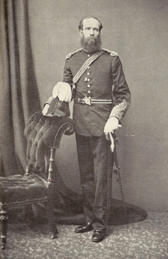
Montgomerie would train Hindu hillmen of India as British spies, who would travel to Tibet under the disguise as Hindu or Buddhist pilgrims and survey the topography of the vast region, including its mysterious rivers like the Tsang-po and also find out the headwaters of some of the greatest rivers of Asia including the Brahmaputra, the Mekong, the Salween, the Hwang-Ho and the Yangtze. These Indians could easily travel in these lands as they were used to Hindu merchants. However, if caught they could easily be disowned by the British in India as just independent travelers and not spies or state agents.
Pundits in Disguise
These Hindu spies under Buddhist disguise would carry prayer beads with them but the number of beads was 100 and not the sacred 108. For every 100 steps, the spy would turn one bead and thus upon the turn of the entire prayer bead 10000 steps would be considered completed. This would be repeated and kept count for. This is how distances were measured while traveling. Needless to say, it was an extremely hard task to complete. They could be discovered anytime if their beads were counted.
They would also carry small scrolls hidden inside their prayer wheels. When nobody was looking they would open the prayer wheel, note the relevant information and then close it. Compass would also be hidden inside the prayer wheel. Sometimes they would carry thermometer hidden inside their walking staff and would keep noting temperature at different junctions of their journeys. Bigger instruments like sextants would be hidden in their traveling chests. Mercury was hidden in cowry shells.
These British spies were mostly Hindus and the stupendous journeys that they took and the surveys that they made are the stuff of legends. In one or two cases they were also Muslim but as a group, they were overwhelmingly Hindu. At great personal risk, but with a great sense of adventure and scientific discovery, they would be crucial in charting the path of the various rivers and mountain cliffs of Tibet and the surrounding mountain ranges in Central Asia.
They were under danger of being killed by fanatical Muslim chieftains in Central Asia from where they often passed. They could be discovered anytime making notes and recording details and subsequently killed. They could be killed by the harsh weather in all of these high altitudes landscapes. But still, they marched on. Their travels are the stuff of legends.
These brilliant men, practically alone, on foot, charted almost entire Central Asia and Tibet. Even at home, they would live a secret life. In British records, they would simply be known with the number assigned to them, such as Number 1 and Number 2. They were paid meagerly and were rarely rewarded in the Royal Geographical Society in London for they were not British citizens, albeit what they achieved is at least akin to if not more than what the great British explores did in Africa, Americas and Antarctica.
Exploring Tibet
Some of the earliest of these spies were Mani and Nain Singh from the Himalayas. They were trained in the spycraft in Dehradun. One of them Nain Singh completed legendary travels across Tibet and managed to chart the entire course of distance from Nepal to Lhasa, along with discovering Tsang-po and traveling across it.
“He was to prove himself a man of astonishing resolution and resource, and was destined to become a legend among explorers everywhere, even before they were allowed to learn his real identity. From all accounts he also possessed remarkable charm and was a popular member of any caravan he joined, and welcome at any campfire. It was no doubt with the help of this charm that he managed to ingratiate himself with the leader of the Nepalese caravan which finally got him safely across the frontier at Kirong, some eight months after his departure from Dehra Dun. His new disguise completely fooled the frontier officials, and once against the false bottom of his traveling trunk survived scrutiny.” (Trespassers… 30)
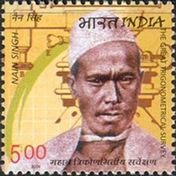
These Hindus spies like Nain Singh could not travel in any vehicle even if they found one. They had to complete the entire journey on foot because that was the only way exact distances could be calculated. Traveling on foot, no matter how hard and perilous it was, would also provide them to study stars and thus directions when they were alone.
Nain Singh spent one and a half year in Lhasa, had a meeting with the Dalai Lama. He mapped the exact locations of various cities of the Tibet and also measured latitudes and altitudes accurately. He walked around two thousand kilometers on foot while doing all the surveys that he was meant to do, clandestinely. Interestingly the map that the Jesuits had created who had gone to Tibet before Nain Singh, were proved to be false. Nain Singh, working under much more dangerous conditions did more accurate surveys than the Jesuit missionaries.
Nain Singh’s explorations were so successful that Montgomerie trained an entire school of these Pundits under the tutelage of Nain Singh. All of these men were Hindus from the hill tribes of Himachal Pradesh and Uttarakhand. They were highly literate and exceptionally intelligent men. It is a sad fact of history that they are often forgotten by history.
Another great Pundit Kishen Singh surveyed the Koko Nor Lake in eastern Tibet and made yet larger and more accurate maps of Tibet. Kishen Singh went to Xinxiang, befriended Mongol caravans and also visited the remote corners of eastern Tibet where three great rivers flow within miles of each other. When he returned back to India with absolutely accurate surveys and detailed maps of Tibet and the other neighboring regions he had traveled on foot more than 4,500 kilometers!
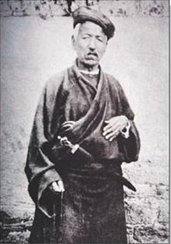
Even today with all the help of modern means of transport and communication it is very hard to navigate these parts of Asia, and yet about 150 years ago these brave Hindu men, not only travelled, but also accurately and scientifically surveyed entire Central Asia, in disguise, under the threat of being killed upon discovery. And they did so accurately while walking! It is a feat that should fill the heart of every Indian with pride.
Discovering the Source of the Brahmaputra
Another Pundit Kintup was given the charge of discovering whether Tsang-po really was the Brahmaputra, as had been suspected after Kishen Singh’s and Nain Singh’s secret missions. For this, he had to log 500 tree logs in Tibet and then send a message through one of his companions to India to check whether the logs floated down the Brahmaputra or not. Tragedy struck and his message never reached British India but his endeavor was so stupendous that it still seems like a fairy tale. The mystery was finally solved in 1912, but it was the stupendous effort of Kishen Singh which opened up the question of the origin of the Brahmaputra again and finally let his successors solve it.
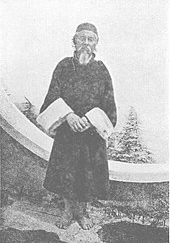
Indian scriptures are not unaware that the Brahmaputra originated somewhere in Tibet and possibly from near the sacred mountain of Kailash. It is one of the holiest pilgrimages for the Hindus and they never stopped making a pilgrimage to it. That is why there was a common agreement that the Brahmaputra started from somewhere near the Kailash, though of course a scientific study was made possible only in modern times. The Mahabharata mentions four rivers descending from the Kailash and one of them is Sita, maintained by many as the earliest name for the Brahmaputra. (Ardussi)
The world-famous novel Kim by Rudyard Kipling fictionalizes the Great Game and particularly the spy ring of Pundits run by Captain Montgomerie. Many of the locations mentioned in the novel are real and many of the incidents are derived from real-life incidents.
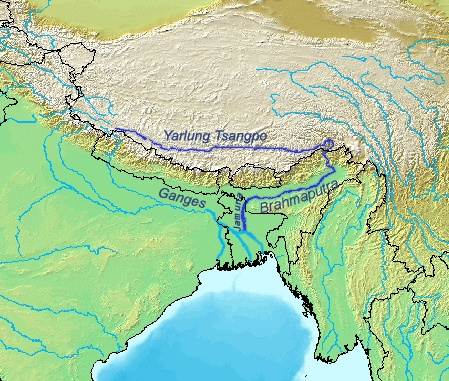
A Matter of Hindu Pride
These brave Hindu men, almost all Brahmins, engaged in heroic pursuits and should be as famous in the annals of history as Stanley and Livingstone, James Cook, Magellan, Amundsen and Scott have been. An American historian William Rockhill has expressed that the fact that these brave and brilliantly ingenious men were Hindus and not Christian Europeans meant that they died in penury and without any name or fame:
“If any British explorer had done on third of what Nain Singh.. or Kishen Singh accomplished, medals and decorations, lucrative offices and professional promotion, freedom of cities, and every form of lionization would have been his. As for those native explorers, a small pecuniary reward and obscurity are all to which they can look forward…” (Trespassers… 52)
Without these brave Hindu men, Sven Hedin and Aurel Stein would not have been able to discover the ancient lost cities of Eastern Turkestan. The greatest treasures of all, the Dun Huang library which was discovered by Aurel Stein was done with the help of a Pundit, Ram Singh. This Ram Singh worked day and night and even after losing one eye he kept working so that Stein could do what he came to do.
Without these intrepid Hindu men, the origin of the Brahmaputra would not have been discovered for any white man would have been instantly discovered in Tibet and killed instantly. Without these brave men, Francis Younghusband would have not have been able to reach Lhasa and strike the Anglo-Tibetan Convention.
Without these fearless and intelligent Hindu men, the British officers would not have been able to lead Indian armies over the dangerous passes of the Hindu Kush in Afghanistan. Without these men, the two Afghan wars would not have been possible. In the First Afghan War, it was the intelligence and experience of one such predecessor of Montgomerie’s Pundits, Mohan Lal, which made the entire war possible. Upon the disastrous retreat of the British soldiers, Mohan Lal suggested that they take the sons of the Afghan chiefs as hostages otherwise nothing would stop the Afghan tribal chieftains to hunt them as they returned and kill them all and which is practically what happened.
It was these men, primarily Hindu, who surveyed the vast outreaches of Central Asia. They advanced human knowledge about the places and people of these areas and contributed as much if not more than some of the most famous fellows of the Royal Geographical Society. The British swung spies in places as far as the Chinese border with Mongolia because these intrepid Hindu men would risk everything to survey these areas. These men followed the Japanese cult leader Count Otani of Japan to find out whether he was a Japanese spy or not.
It is a shame that these intrepid, intelligent and breathtakingly courageous Hindu men who surveyed entire Central Asia practically alone, on foot, with great risk and with great scientific accuracy stand now almost completely forgotten. The Indian state has hardly recognized them outside some academic works. True they were in the service of the British but that does not belittle their achievements at all. They were the heroes of India, heroes of Hindu society and they shall be celebrated as such.
For in so many books we come to read how Muslims under the Abbasid Caliphate ‘nurtured science’, how Muslims of the Levant preserved ancient Greek knowledge, how ‘Arab geographers’ made some of the best medieval maps? Most of these claims are false and most of these so-called Muslims were either Jews or worked with the help of pagan and Hindu geographers. But that is not the point here.
The point here is that Islam and Muslims seldom fail to take credit when they deserve and even when they do not deserve it. But then why do we, the Hindus, fail to take credit for even our most genuine and most stupendous of our achievements?
And the term ‘Indian’ would not do. It was the Hindus and their value system which nurtured a love for pure knowledge that led these Pundits to persevere with extreme weather and adverse religious and social conditions to do what they did: map entire Central Asia and reveal various ancient mysteries of this vast region of Asia. They shall never be forgotten and now is the time to remember them.
This article was first published at indiafacts.org.
References
- Ardussi, John A. “The Quest for the Brahmaputra River and Its Course According to Tibetan Sources.” The Tibet Journal, vol. 2, no. 1, 1977, pp. 35.
- Hopkirk, Peter. Quest for Kim. John Murray, 2006.
- Hopkirk, Peter. The Great Game: On Secret Service in High Asia. John Murray, 2006.
- Hopkirk, Peter. Trespassers on the Roof of the World: The Race for Lhasa. John Murray, 2006.
- Kipling, Rudyard. Kim. Penguin, 1991.
Featured Image: A Rustic Mind
